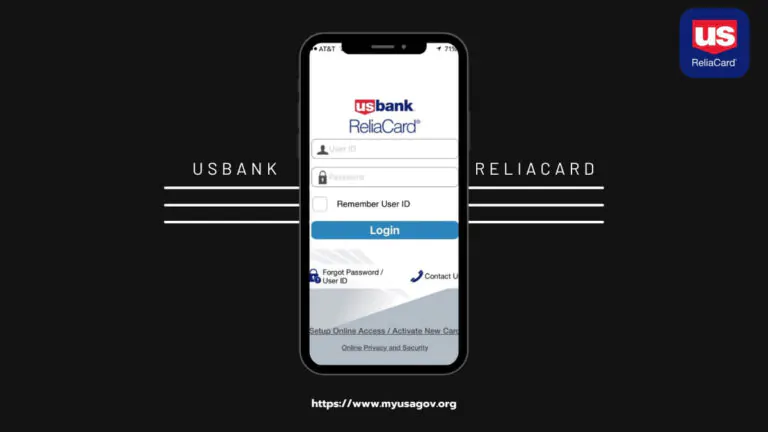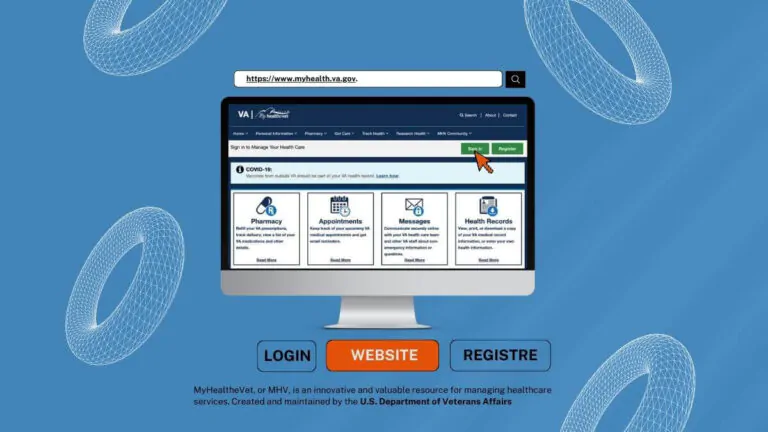OPM Login – Online Retirement Services

Planning for retirement is a crucial aspect of every federal employee’s career journey, and the Office of Personnel Management (OPM) plays a significant role in that planning.
From managing various retirement programs to offering comprehensive retirement services that guide government employees through the labyrinth of retirement planning, the OPM serves as the federal government’s principal agency for human resources and employment matters.
Logging into OPM’s Online Retirement Services Portal
Logging into OPM’s online retirement services portal is a relatively straightforward process, but here are detailed steps to guide you:
- Access the OPM Website
- Open your web browser and navigate to the official OPM website at https://www.opm.gov/.
- Locate the Retirement Services Portal
- On the home page, look for a section titled “Retirement.” This should be located on the main menu of the website. Click on this section.
- Navigate to the Login Page
- From the dropdown list, select “Services Online.” This will redirect you to the login page of the Retirement Services Online portal.
- Enter Login Details
- Enter your username and password in the appropriate fields if you already registered for an account.
- If you haven’t registered for an account, look for the option that says “Register.” Click on this link and follow the instructions provided to create your account.
- Security Authentication
- Depending on the security measures, you may be required to go through a two-step authentication process. This could involve entering a code sent to your registered email or answering a security question.
- Login
- After entering your login details and completing any necessary security authentication, click the “Login” or “Submit” button to access your account.
- Troubleshooting login issues
- If you have trouble logging in or have forgotten your password, look for the “Forgot Password” or “Help” options typically available on the login page. Follow the prompts provided to recover or reset your password.
The exact details may vary slightly depending on OPM’s web design and security measures. Always ensure you are on the official OPM website to safeguard your personal information.
History and Role of OPM in Retirement Services
The history of OPM Retirement Services dates back to 1883 when the U.S. Civil Service Commission, the predecessor of OPM, was established to bring merit-based hiring into the federal government.
Over the years, the OPM has evolved to manage various services catering to the Federal Employees Retirement System (FERS) and the Civil Service Retirement System (CSRS), ensuring each government employee has access to a secure and efficient retirement plan.
This article will take you through the intricacies of OPM Retirement Services and provide an overview of their indispensable role in shaping the retirement landscape for federal employees.
Retirement Systems Managed by OPM
When it comes to federal retirement systems, the Office of Personnel Management (OPM) provides two main options: the Federal Employees Retirement System (FERS) and the Civil Service Retirement System (CSRS).
While both are designed to provide retirement, disability, and survivor benefits, key differences exist. Let’s delve deeper into these two systems’ intricacies to understand better their eligibility requirements, benefits and how to choose the one most suited to your needs.
Federal Employees Retirement System (FERS)

- Eligibility: FERS is available to federal employees who started service on or after January 1, 1987.
- Benefits: FERS operates under a three-tiered retirement plan, providing help from three different sources, including:
- Basic Benefit Plan: This is a defined benefit plan where your benefit is computed based on your length of service and the average of your highest three years of basic pay.
- Social Security: FERS employees are eligible for social security benefits.
- Thrift Savings Plan (TSP): Under FERS, you can contribute to the TSP and a portion of these contributions is matched by the government.
- Choice Factors: FERS is generally the default for most new federal employees. However, some employees under the CSRS system had a one-time option to switch to FERS.
Civil Service Retirement System (CSRS)
- Eligibility: CSRS covers federal employees who were first hired before 1987.
- Benefits: CSRS is a defined benefit plan, meaning that employees receive a specific benefit upon retirement, calculated based on years of service and the average of the highest three years of basic pay. CSRS does not include Social Security for those hired after 1983 but allows contributions to the TSP without a government match.
- Choice Factors: Those eligible for CSRS are typically long-term employees who began their federal service before 1987. While some CSRS employees had the option to switch to FERS, many chose to stay with CSRS due to the lucrative pension benefit.
Services Offered by OPM in Retirement Planning
The Office of Personnel Management (OPM) provides many retirement services designed to cater to the diverse needs of federal employees.
Their comprehensive services cover many areas, including retirement eligibility, benefits calculation, survivor benefits, etc. Let’s delve deeper into the specific services OPM offers to provide a detailed understanding of how they assist federal employees in navigating their retirement options.
Retirement Eligibility

- For both FERS and CSRS, OPM determines retirement eligibility based on age and years of service.
- FERS employees may retire at their minimum retirement age (MRA) with 30 years of service, 60 with 20, or 62 with five years of service.
- CSRS employees may retire at age 55 with 30 years of service, 60 with 20, or 62 with five years of service.
- OPM also provides detailed guidance for employees nearing retirement to understand their eligibility and the necessary steps to apply for retirement.
Retirement Benefit Calculations
- OPM offers services to calculate retirement benefits for both FERS and CSRS employees. These calculations are based on years of service, the average of the highest three years of basic pay, and specific formulas for each system.
- OPM provides online calculators and guidance for employees to estimate their retirement benefits.

Survivor Benefits
- OPM oversees survivor benefits for federal employees. In case of an employee’s death, their spouse and dependents may be eligible for survivor benefits under FERS and CSRS.
- The surviving spouse of a FERS employee could receive a basic employee death benefit plus 50% of the employee’s annuity. Under CSRS, a surviving spouse could receive 55% of the employee’s annuity.

Annuity Payments
OPM manages the regular disbursement of annuity payments to retirees under both FERS and CSRS. Retirees receive a specific monthly amount, ensuring a steady income post-retirement.
Post-Retirement Insurance
Retirees may be eligible to continue certain insurance coverages in retirement, including health, life, dental, and vision insurance. OPM guides these post-retirement insurance options.
Tips for Maximizing OPM Retirement Services
Making the most of OPM retirement services is crucial for federal employees who want to ensure they’re fully equipped for a secure, comfortable retirement.
Whether you’re enrolled in the Federal Employees Retirement System (FERS) or the Civil Service Retirement System (CSRS), having a clear strategy can maximize your retirement benefits. Let’s delve into some practical tips and specific actions you can take to optimize your retirement plan.
Plan Early and Understand Your Retirement System
- The first step towards an optimized retirement plan is understanding your specific FERS or CSRS system. Familiarize yourself with the specifics of your retirement plan, including eligibility, benefits, and how benefits are calculated. The OPM provides a wealth of information to help you understand your retirement system and plan effectively.
- Start planning for your retirement early in your career. This includes regular contributions to your retirement fund and ensuring you’re on track to meet your retirement goals. The Federal Employee Retirement Planning and Management platform provides resources that can help federal employees at different stages of their career plans for retirement.
Make the Most of Your Thrift Savings Plan (TSP)
- Both FERS and CSRS employees have the option to contribute to the TSP. Ensure you’re making the most of this plan by contributing regularly and strategically investing your funds.
- FERS employees should take advantage of the government matching contributions to their TSP.
Consider Your Retirement Timing
- The timing of your retirement can significantly impact your retirement benefits. Consider factors like your minimum retirement age, years of service, and the optimal time for you to start drawing benefits.
- Utilize OPM’s online calculators and resources to estimate your benefits at different retirement ages and make an informed decision.
- Keep Up With Life Changes
- Remember that specific life changes can affect your retirement benefits. This includes changes in marital status, number of dependents, and employment status.
- Ensure your retirement plan reflects these changes by regularly updating your personal information with the OPM.
Retirement Planning Resources
The Office of Personnel Management (OPM) provides various resources to aid federal employees in retirement planning.
These include offering detailed information and OPM Webinars that focus on various aspects of retirement planning, from understanding your benefits to preparing for retirement transitions.
Optimizing your retirement plan requires a strategic approach and a thorough understanding of the OPM retirement services available to you. By taking the steps outlined above, you can maximize your retirement benefits and ensure you’re well-prepared for a comfortable, secure retirement.
Remember, successful retirement planning is a long-term process that requires consistency, planning, and strategic decision-making.
Recent Updates in OPM Retirement Services
Keeping up with the updates and changes in OPM Retirement Services is crucial for federal employees to make the most of their retirement plans. Let’s discuss some of the recent updates:
Changes in Retirement Calculation Methods
In recent years, OPM has refined the methods used to calculate retirement benefits. For example, FERS employees now have their High-3 average pay calculated based on the highest paid consecutive three years of service. T
his change has implications for how retirement benefits are calculated and might influence an employee’s decision on the timing of their retirement.

Updates to the Thrift Savings Plan (TSP)
There have been several updates to the TSP recently. The introduction of Lifecycle (L) Funds, designed to automatically adjust the investment mix of stocks, bonds, and treasury securities over time, is a significant development. This allows federal employees to make more strategic decisions about their retirement investments.
OPM Digital Transformation
OPM has made a concerted effort to digitize many of its services, making it easier for federal employees to manage their retirement plans online. This includes estimating retirement benefits, accessing retirement forms, and keeping track of annuity payments. Explore these digital services on OPM’s official website if you haven’t already.
Changes in OPM Retirement Eligibility
Amendments have been made to retirement eligibility criteria in certain circumstances. Review these changes on the OPM’s retirement eligibility page to understand if and how they might affect your retirement timeline.
Updates to Survivor Benefits
OPM has updated its policies regarding survivor benefits, including changes to the eligibility criteria and the process for application. Make sure to familiarize yourself with these changes on the OPM’s survivor benefits page to ensure that your loved ones will be cared for in the event of your passing.
Given the complexities of retirement planning, staying up-to-date with changes and updates from OPM is essential. Regularly check the official OPM website or sign up for updates to stay informed. If you need further clarification on any updates or changes, don’t hesitate to contact OPM directly or consult a retirement planning advisor.
FAQs
What are the main retirement systems managed by OPM?
The Office of Personnel Management (OPM) manages two central retirement systems for federal employees: the Federal Employees Retirement System (FERS) and the Civil Service Retirement System (CSRS).
How does OPM determine retirement eligibility?
OPM determines retirement eligibility based on an employee’s age and years of service. The specific criteria vary between FERS and CSRS.
What is the Thrift Savings Plan (TSP), and who is eligible for it?
The TSP is a retirement savings plan for federal employees. Both FERS and CSRS employees are eligible to contribute, but only FERS employees receive matching contributions from the government.
What are survivor benefits, and who provides them?
Survivor benefits are payments made to the surviving spouse and dependents of a federal employee or retiree who passes away. OPM manages these benefits under both the FERS and CSRS systems.
How can I estimate my retirement benefits?
OPM provides online calculators and guidance to help federal employees estimate their retirement benefits under FERS and CSRS.
What resources does OPM provide for retirement planning?
OPM offers a variety of resources to assist federal employees with retirement planning. These include retirement guides, webinars, online calculators, and more.
How can I make the most of OPM’s retirement services?
To optimize your retirement planning, it’s essential to understand your retirement system (FERS or CSRS), contribute regularly to your TSP, consider your retirement timing, update your personal information with OPM as necessary, and take advantage of OPM’s resources and services.




